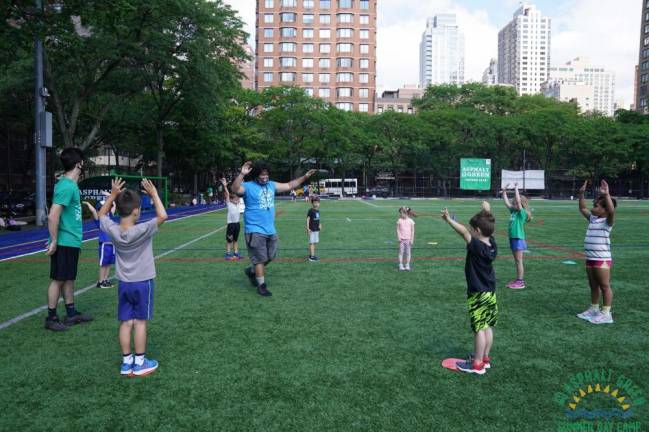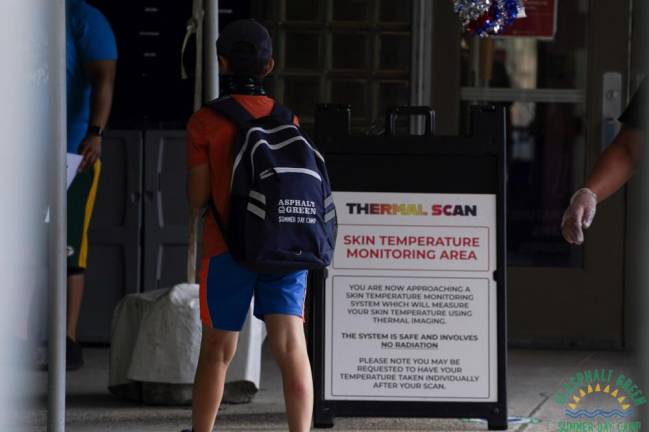Last summer, amid a global pandemic, day camps in New York and overnight camps in the Northeast were able to operate and did so successfully. Camps reported zero or very few cases of COVID, all of which were quickly contained. Unfortunately, New York overnight camps were unable to open, however, Governor Cuomo has given the green light for camps to plan for summer 2021 and camps have a blueprint on how to run safely amid COVID-19.
Camps have put numerous health and safety protocols in place to mitigate the risk of infection at camp with guidance from the American Camp Association, the CDC and state and local department of health offices. While camps will have to modify certain aspects of camp, the fundamentals of camp being a place to gain independence, confidence and make new friends all remain the same. And there is no doubt that kids need camp more than ever before after a year of remote learning, missed extracurricular activities and way too much screen time.
Here are a number of the protocols camps put into place last summer to keep campers healthy and safe. There wasn’t just one protocol that worked but each was part of a multi-layered system to mitigate the risk of COVID at camp. Many protocols will remain, however, some will be eased depending on infection rates and vaccinations by the summer.
DAY CAMPS
Daily Temperature Checks – Each day, children were required to have their temperature taken, either at home, at the bus stop or at camp. If your child had a fever, they were asked to stay at home for a certain number of days and they may have been asked to get a COVID test or note from their pediatrician before returning to camp, depending on the camp’s procedures.
Daily Health Screening – Every morning, families filled out a health screening with questions about how your child was feeling. If they were exhibiting any COVID symptoms or had traveled to certain states, they were asked to stay home from camp that day.
Outside activities – Many camps held their activities outside, reducing the risk of spreading the virus. Camps were able to maximize their outdoor space and rethink it to run the camp program outdoors as much as possible.
Hand hygiene – Camps set up additional hand washing and hand sanitizer stations throughout camp and hand hygiene became a top priority before and after activities. Many camp directors reported a decrease in common sicknesses over the summer because of diligent hand hygiene.
Cohorts/pods – Camp groups acted as cohorts where they stayed together throughout the day and didn’t intermingle with other groups. Cohorts were used so if a child or staff member tested positive for COVID, the cohort/pod could be quarantined and it wouldn’t affect the rest of camp. The size of these cohorts for 2021 will depend on state guidelines.
Additional cleaning & disinfecting – Camps have always cleaned and disinfected equipment and activity areas but with COVID, those cleanings increased throughout the day and included a deeper cleaning.
Lunch– To limit the number of people gathering together, lunch times were staggered and lunch took place outside. The way lunch was served looked different than past summers with many camps moving away from buffet to pre-packaged lunches.
Masks – Last summer, staff wore masks at New York day camps and campers wore masks on buses and when distancing between cohorts couldn’t be maintained.
Busing – Some camps decided to run busing last summer and some didn’t but camps will run busing in 2021. Due to social distancing guidelines, there will be less children on each bus this summer, everyone will wear masks and children will sit alone, with a child from their cohort or with a sibling in their household.
Field trips – While out of camp trips have always been fun, camps eliminated them last summer to reduce exposure to other people. Field trips will be determined by each camp and final decisions on them will occur closer to summer when directors can evaluate where the state is with COVID-19.
OVERNIGHT CAMP
Testing – The use of COVID-19 tests was part of how overnight camps operated safely last summer. Each camper tested before camp and again at camp. How testing will be used for 2021 will be determined closer to the summer.
Temperature checks & Daily Health Screening – Like day camps, campers had their temperature taken each morning and a health screening was given daily at overnight camp.
Cohorts/Pods – With the goal of all campers being able to come together after a period of time, many overnight camps had cohorts or families where those campers started camp together and only intermingled with their cohort for first 2-3 weeks of camp. As time went on and camp was deemed COVID free through, campers were able to come together as a camp while also maintaining distancing between other cohorts.
Outdoors – Overnight camps used their vast outdoor space to help mitigate the risk of COVID and spent as much time outdoors as possible which reduces the risk of spreading COVID.
Masks – Masks were used when social distancing couldn’t be maintained between cohorts or when an all camp gathering was occurring.
Inter-camp Games – While inter-camp games have long been a tradition of overnight camps, last year there were no inter-camps to mitigate the risk of COVID. Decisions on inter-camp games for this year will happen closer to camp.
Cleaning/disinfecting – As with day camps, there was an increase in cleaning and disinfecting around camp from equipment to facilities.
Hand hygiene – Camps increased hand hygiene among campers and staff with additional hand washing stations and frequency and hand sanitizing throughout the day. Overnight camp directors also reported less common sicknesses because of the additional hand hygiene.
All camp gatherings – One of the most special parts of overnight camp is when the whole camp comes together for all camp gatherings. After it was deemed safe to all come together, these larger camp gatherings were able to occur safely.
Dining – Each camp that opened did dining differently however campers ate outside more frequently and some camps staggered eating times.
Visiting Day – Last summer, the overnight camps that ran didn’t offer a visiting day to ensure the safe environment they created at camp remained COVID free. Decisions on Visiting Day will be made closer to the summer depending on rates of infection and vaccinations.
Camp trips – Trips outside of camp were eliminated last summer. Decisions on camp trips will all depend on what the rates of COVID infection are in the states the camps are located in and where the campers are traveling to.

